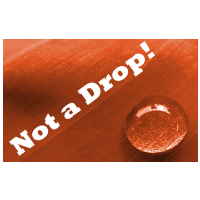Public Health Department Warns that 17 Rural Communities Could Run out of Water Soon

Just days after Governor Jerry Brown declared a drought state of emergency, the California Department of Public Health (CDPH) identified 17 rural communities in 10 counties at risk of running out of water in the next two or three months.
The small water systems serve communities in Central California that range in size from 39 to approximately 11,000 users. There are approximately 3,000 such systems, with at least 15 service connections each, providing water in California. Smaller communities are more vulnerable during droughts because they tend to have fewer alternatives when their primary water source dries up.
The public health department’s Drinking Water Program monitors systems through 23 district offices and expects to update its list of impacted communities on a weekly basis. The state experienced its driest year in history, leaving reservoirs and critical mountain snowpack at record-low levels. Groundwater sources are drying up and rivers are running shallow.
The weekly update is sure to join a daily onslaught of drought horror stories around the state, as California, the nation and the world wrestle with the prospect that global warming may have scrambled all historical, cyclical climate expectations. It’s one thing to shuffle around resources for two or three years to cover temporary shortfalls; it’s quite another to confront a new paradigm that might include lengthy, if not permanent, declines in rainfall.
California is no stranger to megadroughts and, according to experts consulted by the San Jose Mercury News, this past 100 years has been one of the wettest stretches in California during the past 7,000 years. It won’t last. The question is: Is the state about to experience a prolonged drought like those that stretched from 850-1090 AD and 1140-1320 AD?
Jay Lund, a professor of civil and environmental engineering at the University of California, Davis, said a drought of more than 10 years would change the face of the state. “Some small towns in the Central Valley would really suffer. They would basically go away,” he said. City dwellers would have their water rations cut in half, golf courses and lawns would disappear, food prices would rise, and costly, environmentally hazardous solutions like desalination would suddenly look more attractive.
California is in its third year of drought and some of the bustling economic activity driven by it seems counter-intuitive. It’s not, and it’s not good. Ranchers who would normally be fattening up their grazing cows for sale sometime in early summer are herding them off to auction now. Monty Avery, co-owner of 101 Livestock Market, told the Associated Press nearly 10 times as many cows are being sold now than usual. Ranchers faced with parched pastures and growing prices for feed are unloading cattle.
Although it might be hard to predict if the state is in for years of dry, trying times, it is not hard to predict that Republicans would attempt to take political advantage of the problem. In the final moments of contentious negotiations in Congress over the 10-year, $956.4 billion national farm bill this week, Republicans attempted to insert a rider that would have diverted water from the San Joaquin-Sacramento River Delta to farmers in the Central Valley.
That would have blown up years of internal state negotiations over crafting a solution to dire problems in the Delta by ignoring conservationists, local residents and infrastructure restoration needs. Congressman John Garamendi (D-California), told the San Francisco Chronicle the move was “a great way to delay the farm bill for another year.”
It didn’t, yet. The bill passed the Senate-House conference committee and is headed back to the two chambers for final votes.
The 17 communities on the drought list so far are:
- Shaver Lake Heights Mutual Water Company (Fresno County)
- Sierra Cedars Community Services District (Fresno County)
- Bass Lake Water Company (Madera County)
- Whispering Pines Apts (Mariposa County)
- Boulder Canyon Water Association (Kern County)
- Cypress Canyon Water System (Kern County)
- Lake Of The Woods Mutual Water Company (Kern County)
- Camp Condor (Kern County)
- Jackson Valley Irrigation District (Amador County)
- City of Willits (Mendocino County)
- Redwood Valley Community Water District (Mendocino County)
- Brooktrail Township Community Services District (Mendocino County)
- Washington Ridge Conservation Camp (Nevada County)
- Ophir Gardens (Placer County)
- Lompico County Water District (Santa Cruz County)
- City of Cloverdale (Sonoma County)
- Healdsburg (Sonoma County)
–by Ken Broder
To Learn More:
California Department of Public Health to Assist Communities with Most Vulnerable Drinking Water Systems Due to Drought (California Department of Public Health)
California Drought: 17 Communities Could Run Out of Water within 60 to 120 Days, State Says (by Paul Rogers, San Jose Mercury News)
Current California Drought Is Driest in State’s History; Scientists Fear “Megadroughts” on Their Way (by Philip Ross, International Business Times)
California Drought Has Ranchers Selling Cattle (by Jason Dearen, Associated Press)
GOP Bid to Link California Drought Measure, Farm Bill Fails (by Carolyn Lochhead, San Francisco Chronicle)
Miserable Sierra Snowpack Ties a Record Low Set Way Back in 2012 (by Ken Broder, AllGov California)
- Top Stories
- Controversies
- Where is the Money Going?
- California and the Nation
- Appointments and Resignations
- Unusual News
- Latest News
- California Forbids U.S. Immigration Agents from Pretending to be Police
- California Lawmakers Urged to Strip “Self-Dealing” Tax Board of Its Duties
- Big Oil’s Grip on California
- Santa Cruz Police See Homeland Security Betrayal in Use of Gang Roundup as Cover for Immigration Raid
- Oil Companies Face Deadline to Stop Polluting California Groundwater





